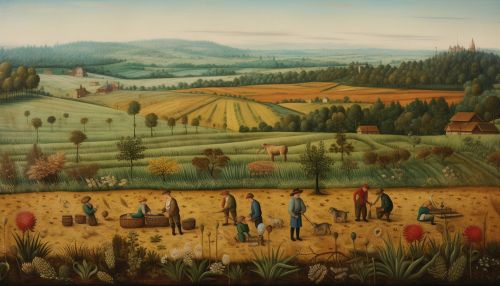Neolithic
Introduction
The Neolithic period, also known as the New Stone Age, marked a significant phase in human history. This era, which followed the Mesolithic period, is characterized by the transition from nomadic hunting and gathering to settled farming and the development of complex societies. The Neolithic period is significant for its innovations in agriculture, animal domestication, pottery, and architecture.
Origin and Chronology
The Neolithic period began around 10,200 BC in the Middle East and ended between 4500 and 2000 BC in various parts of the world. The term "Neolithic" was coined by Sir John Lubbock in 1865 as a refinement of the three-age system of stone, bronze, and iron ages.


Neolithic Revolution
The Neolithic Revolution refers to the transition from hunter-gatherer societies to settled farming communities. This shift brought about significant changes in human society and the environment. It led to the development of agriculture, which allowed for the growth of surplus food, leading to population growth and the formation of complex societies.
Agriculture
The development of agriculture was a key feature of the Neolithic period. Early Neolithic farming was limited to a narrow range of plants, both wild and domesticated, which included wheat, barley and peas. As societies became more sophisticated, they began to cultivate a wider range of plants and to domesticate animals.
Domestication of Animals
The domestication of animals was another significant development during the Neolithic period. The first animal to be domesticated was the dog, followed by sheep, goats, cows, and pigs. These animals provided a reliable source of meat, milk, and hides.
Pottery
The invention of pottery was another significant development during the Neolithic period. Pottery was used for storing food and water, cooking, and as funerary offerings. The earliest pottery was plain and functional, but as techniques improved, pottery became more elaborate and decorative.
Architecture
The Neolithic period also saw significant developments in architecture. Early Neolithic buildings were simple, often comprising of a single room, but as societies became more complex, so did their buildings. The most famous Neolithic structures are the large stone monuments known as megaliths, such as Stonehenge in England.
End of the Neolithic
The end of the Neolithic period is marked by the advent of the Bronze Age, when the development of metal tools began to displace stone tools. This transition did not happen at the same time in all regions, and in many areas, there was a transitional period, the Chalcolithic, or Copper Age.
